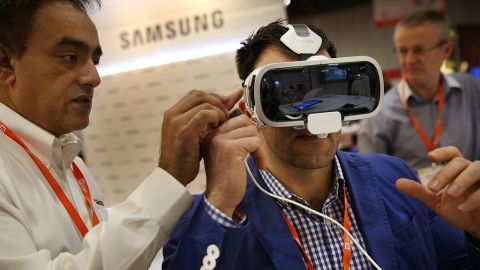Want to See Inside of Your Heart? Virtual Reality is Making That Possible

The first time a deceased human was carved open for public display was in Bologna in 1315. Even then it took over a century for autopsies to be an acceptable medical practice. The sacredness of the body remained a religious holdover for many centuries, with doctors and anatomists doing their best to create internal maps predominantly through guesswork.
Following Mondino de’Liuzzi’s public display obtaining corpses slowly became possible, though it wasn’t until the fifteenth century that doctors left behind religious baggage and started slicing open the dead with regularity. An entirely new understanding of biology and anatomy became possible. Medicine improved drastically.
Virtual reality is now offering another important evolutionary step in understanding our body. Working on cadavers is one thing, but accessing a living, breathing body offers physicians in training a hands-on (or, in this case, goggles-on) approach. Stanford University is bringing that possibility to life.
Instead of relying on anatomical charts, doctors have access to a virtual reality room in which they can view the heart in three dimensions. As Stat reports,
Through VR goggles, they can now travel inside the heart and explore congenital heart defects as if they have been shrunken to the size of a peanut.
The result is an almost-real life gaze into blood flow, blockages, and other defects. Researchers are imagining this new technology not as a replacement for previous techniques, but rather as a complement for MRI, CT scans, and cadaver dissection. Trainees will have a clear view of what occurs in the operating room before ever picking up a scalpel.
Virtual reality is taking over many domains in medicine. One project at the University of Michigan gives doctors an interior view of the brain during migraine headaches. Another is being used to alleviate anxiety in people suffering from post-traumatic stress disorders, fear of heights, and fear of public speaking. Pain reduction through distraction therapy has found a home in Seattle, while a VR game, DEEP, provides an immersive meditation experience that could have therapeutic benefits.
At Stanford, once you put your googles on you can choose from a dozen 3-D hearts, each with a specific defect. You can explore the heart as a whole or, via a controller, open up its sections. While the current model allows you to see a range of hearts, the hope is that in the future patients can actually strap in to witness their own heart beating in real time.
Once this technology is complete researchers hope to move on to the brain and lungs in order to tackle cancers and other defects occurring in these regions. Stanford is leading the charge in a variety of virtual reality applications, examining such topics as racism and homuncular flexibility—“the ability to learn to control novel avatars in interactive tasks—in their labs.
The researchers at Stanford are already making progress with this heart application. One doctor was able to understand how to treat a leaky pulmonary valve before making a single incision. It might have taken humans centuries to accept a physical invasion into a body, but this novel gaze inside virtual replications of real bodies is not going to take nearly as long.
—
Derek’s next book, Whole Motion: Training Your Brain and Body For Optimal Health, will be published on 7/4/17 by Carrel/Skyhorse Publishing. He is based in Los Angeles. Stay in touch on Facebook and Twitter.





